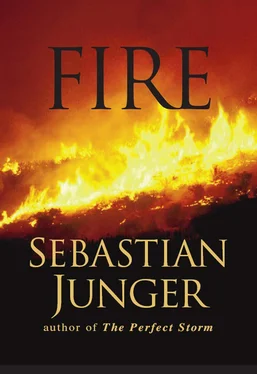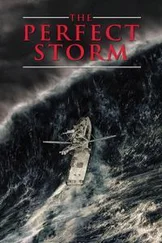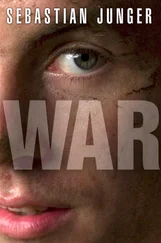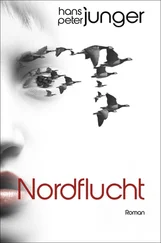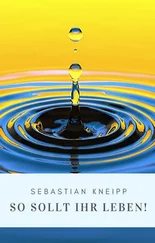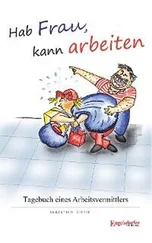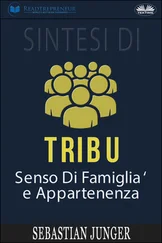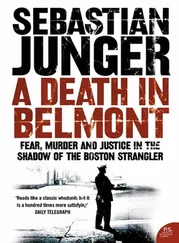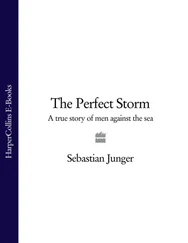The sniper must have been waiting for a car to pass so the cop would have to step out into the road. He must have been lying there in the scrub oak, smoking cigarette after cigarette, completely wired with this new killing game, contemplating how he was going to escape when he finally lost his nerve and stopped shooting. The place was crawling with Serbs; he’d have only a few minutes to get out of there.
The first shot simply caused the cop and me to look at each other in puzzlement. The second one got Harald and me out of our seats. The third forced all of us—me, Harald, the cop—to dive behind the car. It’s amazing how fast animosity vanishes among people who are suddenly getting shot at. One cop fumbled with his radio; the others shoved their guns over the tops of the sandbags as they tried to figure out where to return fire. Pap…pap…pap. The guy on the radio shouted for help while Harald and I scrambled across the road and into the bunker. The cop next to us struggled to put on his flak jacket with the resigned look of someone who had to do this at least once a day.
The shooting stopped as suddenly as it had begun, and a cop dismissed us with a wave of the hand. “Get the fuck out of here,” he told us. We got back into the car and drove out of the highlands, past a town called Lauša—shot to pieces in the offensive—past the Serb police headquarters in Srbica, and right up to the gate of the munitions factory. The dirt road to Prekaz crosses in front of the gate, and we drove down it slowly, not wanting to give the impression that we were trying to slip past anyone.
The paramilitary soldiers didn’t stop us until we were right on the edge of town, coming at us out of a camouflaged bunker, with guns drawn and incredulous expressions on their faces, as if they couldn’t believe someone was stupid enough to defy them. They looked as if they would have stopped even a regular police car; they looked completely uncontrolled by anyone but themselves. One of them shouted for our papers while two others circled the car, guns trained on us. “We were just shot at by the KLA,” Harald said out the window. “Now we understand why you guys are here.”
It worked. The soldier studied our papers and then waved us through. As far as I could tell, the only reason the Serb military allowed journalists into Prekaz—a damning place, easily sealed off—was to spread word of what would happen to those who resisted.
Harald drove slowly down the town’s wide dirt street, which ended at a pasture. A dead cow lay rotting by the side of the road. Every house had its roof blown off, its windows shot out, or its walls caved in. Rooms spilled their contents to the world, as if disemboweled by some huge claw. Walls were pocked with mortar shell explosions; tongues of soot licked roofward out of windows. Bullet shells lay in gleaming little piles wherever someone had really put up a fight.
Harald and I walked through a wooden gate, splintered by artillery, and into the courtyard of a house. Two abandoned dogs, one with a wound on its back, growled at us from what used to be the doorstep of their home. Harald gave the dogs some sausage and a tin of sardines, and we stepped around them and into their family’s home. Schoolwork sat on tables, and jackets hung on pegs alongside things that had been blown to bits. It was odd what had been touched and what hadn’t.
After the attack this particular house had served as an outpost for the special police, who had gone through it room by room, laying their hands on everything that could be tipped over or broken open. Books, clothes, photo albums, and lamps all lay tangled on the floor. On top of one pile was a Serb porn magazine, discarded by the latest occupants.
We paid our respects to the fifty-five rectangles of freshly dug-up earth in the pasture above town, and then we drove back out to the world of the living. As we passed, the men at the bunker were posing for a group portrait—the destroyed town in the background, their machine guns wedged upright in the crooks of their arms. The men grinned broadly at us.
One of them wasn’t holding a gun in his hands. He was holding a huge double-bladed ax.
DISPATCHES FROM A DEAD WAR
1999
EDITOR’S NOTE: In July 1974 the Turkish military seized the northern third of Cyprus after a violent coup by right-wing Greek Cypriots—supported by Greece—appeared to threaten the Turkish Cypriot minority. Twenty-five years later Cyprus remains partitioned, a case study in how ethnic hatred perpetuates itself, but perhaps also a manual on how peace might be sustained in places like Kosovo. In February Harper’s Magazine sent Scott Anderson and Sebastian Junger to report on this intractable zone of conflict. To decide who would go to which side, they flipped an old Greek coin with a man’s head on one side and a war chariot on the other. The coin landed chariot side up, which meant that Anderson traveled to the Turkish Republic of Northern Cyprus (TRNC) and Junger to the Greek side, the Republic of Cyprus.
Sebastian Junger
A fool throws a stone into the sea and a hundred wise men cannot pull it out.
—CYPRIOT PROVERB
The rusting yellow car sits on four flat tires against an old wall in the buffer zone, directly in front of a cement bunker with a machine-gun slit. Painted a cartoonish camouflage, the bunker is manned by a lone Greek Cypriot soldier, who smokes a cigarette as he watches us.
I have been walking the length of the buffer zone in Nicosia with a British peacekeeping soldier named Murphy, who carries a silver-tipped walking stick instead of a gun. He uses it to point things out. We’ve started at a UN observation post at the east end of town and progressed between the two irregularly parallel cease-fire lines under a dreary rain that patters through the thick no-man’s-land foliage and fills puddles in the road. Murphy has shown me where, in 1989, a Greek Cypriot soldier supposedly dropped his pants and from 164 feet away mooned his Turkish counterpart, who promptly shot him dead. The spot, now a patrol landmark, is identified by a sign: MONUMENT TO THE MOON. Farther along is a place where the UN-patrolled zone, known in Nicosia as the Green Line, squeezes down to the width of a narrow street. The balconies of two buildings on either side extend to within ten feet of each other, and a few years ago Greek and Turkish soldiers took to strapping knives to the ends of long poles and jousting with each other. In other places they sling stones or shout insults.
“We can’t do anything about it unless we see it happen,” Murphy tells me. “It’s all right for the [Greeks] to say, ‘These Turkish soldiers are throwing stones at us.’…So we phone up the Turks and say, ‘We’ve had reports that some of your soldiers are throwing stones.’ The first thing they say is, ‘Well, did you see it?’ And we say, ‘No, we didn’t.’ So there’s not a lot we can do.”
Now we stand in the rain in front of the old yellow car, which also is identified by a sign, YELLOW CAR. A landmark for UN patrols, the car was once the focus of a bitter dispute between the Greeks and the Turks. In the original delineations of the buffer zone, Turkish territory was described as extending from the “front” of the yellow car to the corner of a building. By “front” the UN meant the end of the car where the headlights are located. The Turks, however, argued that the front was the end of the car nearest to one of their observation posts; the resulting difference in the angle of the cease-fire line would give them another fifty square feet of territory.
“They finally worked out a compromise,” Murphy tells me. “The line stayed where it was, but a Turkish soldier gets to stand in the triangle of disputed territory for five minutes each hour.”
Читать дальше
